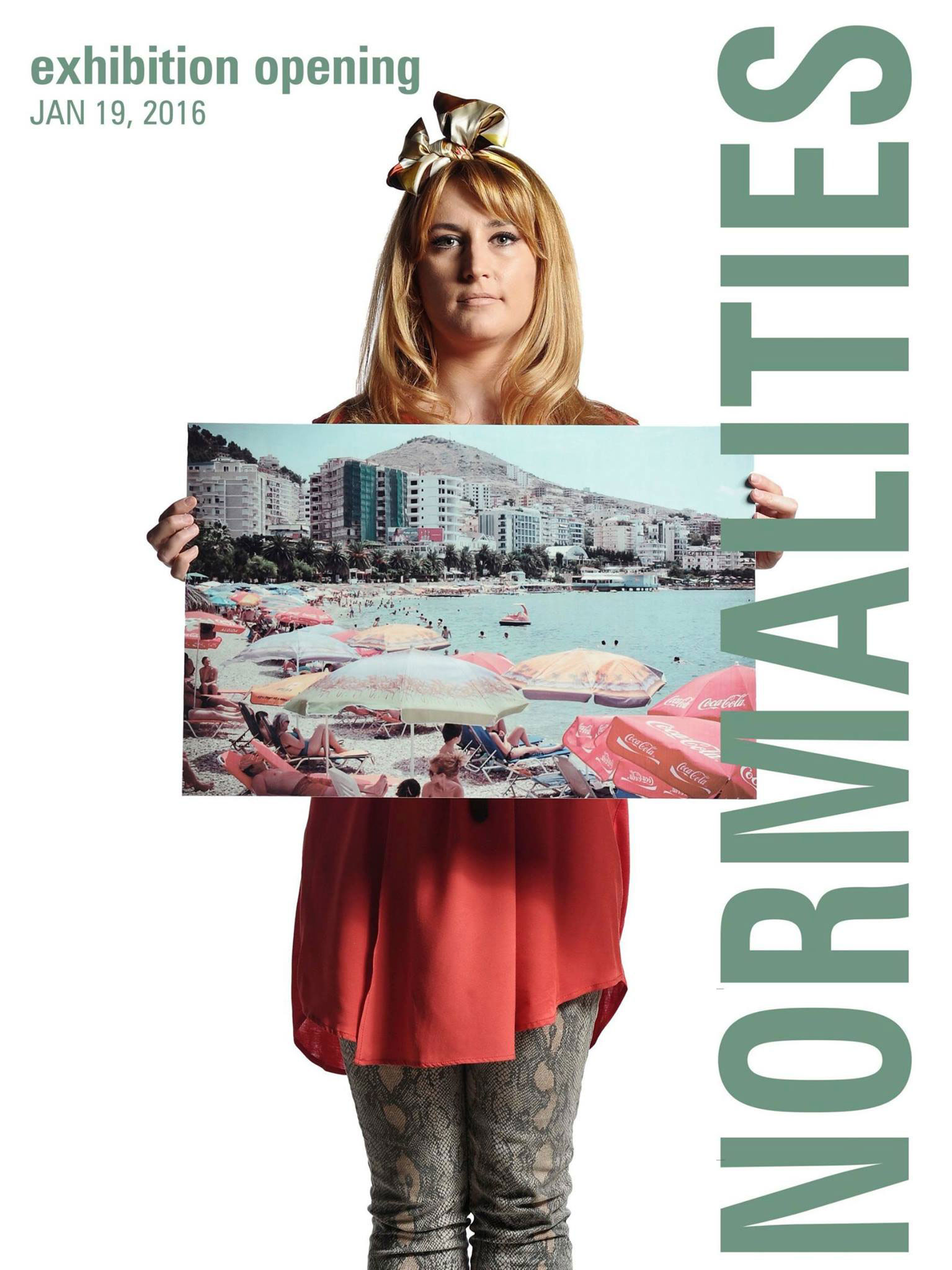Presented by Albanian Institute
Talk & Live Conversation
Albanian Institute in collaboration with Austrian Cultural Forum is pleased to presented Normalities a show starring artists Cäcilia BROWN, Nemanja CVIJANOVIC, Dusica DRAZIC, Flaka HALITI, Ibro HASANOVIC, Jelena JURESA, Jakob Lena KNEBL, Irena Lagator PEJOVIC, Armando LULAJ, Alban MUJA, Damir OCKO, Ana PRVACKI, Marusa SAGADIN, Saso STANOJKOVIK, Kerstin VON GABAIN.
DATE: January 20 – April 12, 2016
VENUE: 11 E 52nd St, New York

(NEW YORK) — We are delighted to announce the upcoming exhibition Normalities presented in collaboration with our partners the Austrian Cultural Forum in New York, a show starring artists from Albania, Bosnia and Herzegovina, Kosovo, Macedonia, Montenegro, Serbia, Croatia, as well as from Austria and the United States.
For philosopher Slavoj Žižek the very name “Balkans” is almost synonymous with “otherness” and deliberately used to distinguish oneself from one’s very neighbor. In the past century, the region was a laboratory of extraordinary political circumstances, and still is by all means a place in constant transition. In recent times, Southeastern Europe has gone through a massive transformation in an economical as well as political sense. Migration has made Vienna the fastest growing European capital, the city with the third-largest Serbian population, and home to many emerging artists. The integration of the Western Balkan countries into the European Union is a clear goal, but still an ongoing process. Apart from these political aspects of normalization, the concept of ‘normality’ becomes all the more attractive within various different theoretical frameworks and disciplines, from philosophy and psychology to sociology and, of course, the arts.
Normalities sets out to explore the concept of normality from a number of different angles—focusing on the Balkans, but extending outwards. What does it mean to be an artist almost a quarter of a century after the fall of Yugoslavia in a globalized world? How can identity collectively and individually be preserved? These questions are crucial, for artists from the region but also beyond. They are similar to those that are being asked all around the globe, in a world that has changed so quickly in the last few decades. The term ‘normality’ defies any attempt at a concise—let alone exhaustive—definition. Its meaning is in constant flux, changing in the most unpredictable ways, as the Balkan region has over the past century.
The works showcased in Normalities go beyond art of a post-conflict society. They range from print, collage, and sculpture to photography and video, support the approach of constantly questioning normality. Some artistic positions deal with overcoming the past: Cvijanović, Lulaj and Hasanović’s artworks deal directly with history as they choose an event or person of great historical importance and manage to create a new reading by shifting symbols. Others address the friction between private and political. In his series of staged portraits Muja, for example, depicts aspects of national identification. Knebl uses her own body as a projection surface in her sculpture dealing with hate speech. Haliti, Jureša and Stanojkoviќ focus on sociological and cultural topics such as de-masking of mechanisms of male bonding, questions of migration or the death of cinemas—dimensions in which issues of normality pervade through and guide society. Prvački’s video At the Tips of Your Fingertips is a performance which literally shows the “laundering” of one dollar bills. Lagator Pejović, Brown and Dražić’s pieces could be described as investigating modes of perception, but all of them also engage with the materiality of the artworks and associations evolving out of a certain choice of material or format. Von Gabain’s work—a plaster cast of a Starbucks cup—can be seen as ironic comment on industrial norms. The analysis of architecture, especially driven by an interest in gender topics, is part of Sagadin’s installation. In TK, Očko investigates human shivering as a mechanism of resistance in a time of global insecurity, anxiety, and fear.
Apart from these political aspects of normalization, the concept of ‘normality’ becomes all the more attractive within various different theoretical frameworks and disciplines, from philosophy and psychology to sociology and, of course, the arts.
Normalities sets out to explore the concept of normality from a number of different angles—focusing on the Balkans, but extending outwards. What does it mean to be an artist almost a quarter of a century after the fall of Yugoslavia in a globalized world? How can identity collectively and individually be preserved? These questions are crucial, for artists from the region but also beyond. They are similar to those that are being asked all around the globe, in a world that has changed so quickly in the last few decades. The term ‘normality’ defies any attempt at a concise—let alone exhaustive—definition. Its meaning is in constant flux, changing in the most unpredictable ways, as the Balkan region has over the past century.
Normalities initiates a new narrative and dialogue that unites the artists on view through their disparities within the confines within the confines of the unique exhibition spaces in New York.
The Albanian Institute is deeply committed to finding new ways to connect and engage with our community and network of collaborators from around the world, both on- and offline.
Designed as a way for our audiences to engage digitally in real-time with artists of various disciplines, creatives, thought-leaders, and cultural luminaries the Albanian Institute’s online series LIVE TALK invites members of the community to take up and take over the Institute’s digital platforms as public forum for conversations on the issues that matter most right now.
Follow us on Instagram @albanianinstitute and facebook/albanianinstitute and be part of the conversation. There are new topics and themes ongoing, so tune in and stay connected.